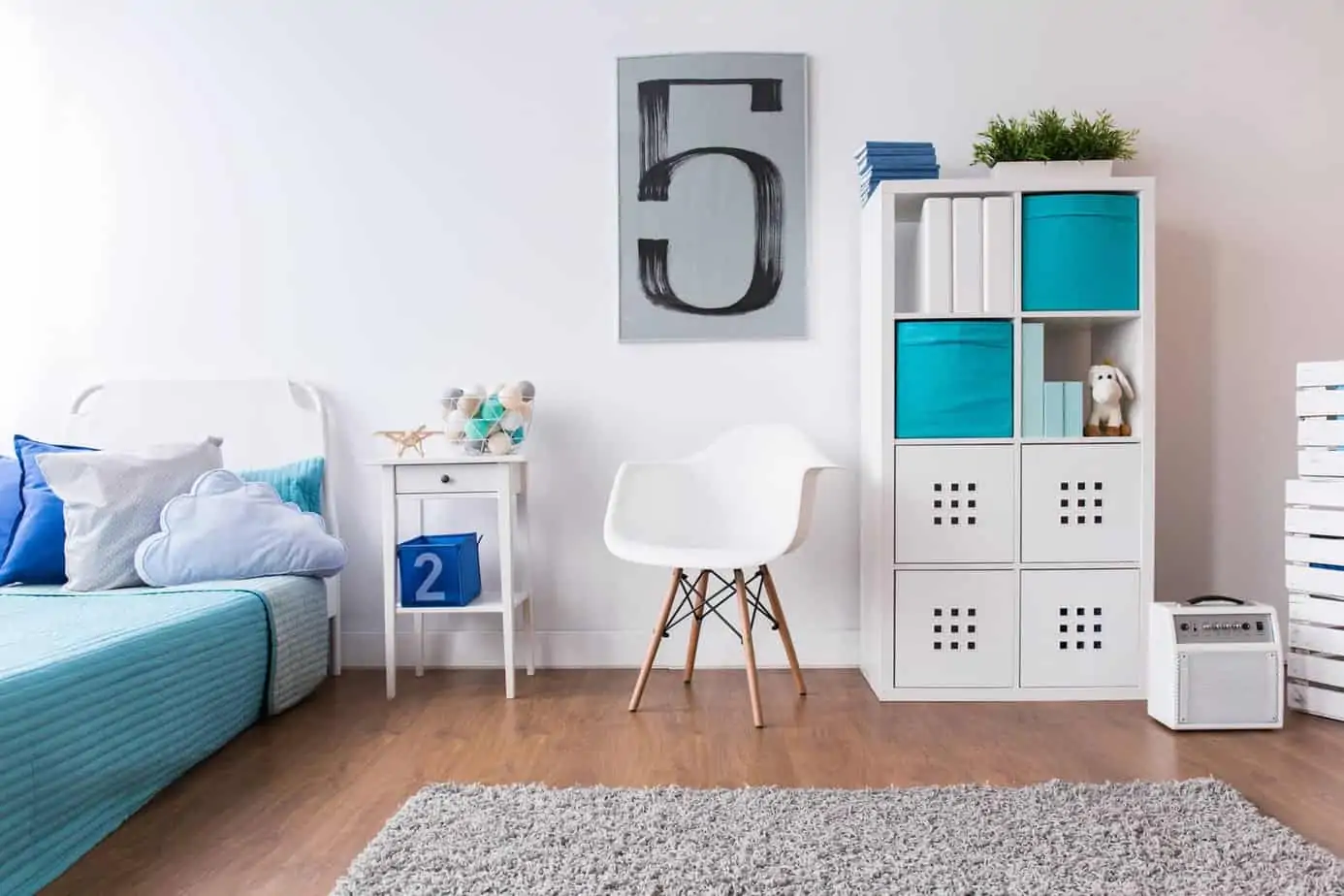Calm Parenting: How to get control of your anger and stay calm, even on the most chaotic days. Be a calm parent and control your emotions when you’re triggered or frustrated.
Ready to make BIG changes and turn down the yelling all the way? The beginner’s guide to stop yelling is the perfect way to dip your toe in to making a change.
Control Your Anger with Kids & Stay Calm
We promise ourselves we’ll never yell at our children.
Then we promise ourselves we’ll stop yelling at our children, because once you’ve raised your voice once, twice, several times… it gets harder and harder to stop.
Staying calm doesn’t come easy.
Discover 5 expert-backed steps to control anger with kids, manage emotional triggers, and stay calm. Practical advice for parents to handle frustration and build positive communication with children.
Learn strategies for long-term anger management and creating a peaceful home environment, to stay calm with kids on even the most chaotic days. It’s time to make good on your promise to stop yelling and set a peaceful tone for your family.
“Mommy is Sorry She Yelled.”
You’ve heard the phrase, “mom sets the tone,” and nothing could be more true when it comes to the emotional tone of your home.
When momma ain’t happy, nobody is happy.
Our moods and inner state are often reflected in our children – in their moods and with their behavior.
This puts tremendous pressure on moms particularly to stay calm and rise above frustrating situations with emotional maturity.
When we’re trying to get them to comply or listen to us, out of frustration we yell and scream. This isn’t exactly the emotional tone of your home you want.
We don’t want to raise our voice or resort to yelling, but darn it, why do kids make the house look like it’s been run through with a tornado and why can’t they hear you ask them to stop dribbling the basketball in the house?
As Mothers, we’re given an incredible responsibility to care for, raise and love our children but there will always be times when they make us want to pull our hair out.
Knowing how to stay calm with kids doesn’t always come easily, but learning how to rise above reacting by yelling and screaming, and instead, choosing healthy ways to manage your emotions and mood is key.
As moms, we have to be intentional about keeping a positive attitude and managing our emotions so that our children can grow up in a positive, and happy home.
We can’t just cross our fingers and pray for our days to go smoothly, because, as anyone with children will tell you, they rarely do.
Instead, we must create opportunities for joy and a toolkit of calm tips to remain so, in an otherwise chaotic environment.
If You’re in a Hurry or Looking for Quick Wins to Help You Control Your Anger…
Staying Calm With Kids When You Feel Angry Inside
Nurturing your emotional state can help you be a calm Mom and create a home environment where your children feel safe, loved and calm, too.
Here are a handful of tips to help you create a home that’s a place of love, peace and positivity.
And of course, calm.
1. Recognize the Early Warning Signs of Anger
Anger is rarely an immediate reaction—it builds over time, often stemming from smaller frustrations that accumulate. These early warning signs can manifest in both physical and emotional ways.
Common indicators of physical reactions include feeling irritable, experiencing tightness in your chest, or sensing that you’re losing patience more quickly than usual.
Mental signs might include persistent negative thoughts or feeling like everything your child does is wrong.
Recognizing these signs can prevent a complete blow-up. You might notice you’re becoming easily frustrated by minor things, such as toys on the floor or the noise level in the house.
Understanding what specifically triggers your anger allows you to take proactive steps to calm down before reaching the point of no return. Keeping a mental log of these triggers over time can also help you manage situations before they escalate.
The key is being aware and attuned to these early signals. Self-awareness helps you pause and reset before reacting in ways you might later regret, making it easier to maintain control during difficult parenting moments.
For Parents: Being Aware of What Your Anger Triggers Are
Part of your emotional state is being aware of how your environment affects your mood.
Triggers are the hot spots in your home and day which make your anger spike. When you’re aware of what makes you angry, you can get ahead and diffuse them.
Here are common triggers a lot of Moms share causes their anger to bubble over.
- Having a noisy house
- Asking your kids more than once to do something
- Complaining kids saying they’re bored, hungry or don’t want to do something
- Feel overwhelmed by your to do list
- Lack of “me time” or quiet time to yourself
- Lack of feeling supported in your role
What are your anger triggers?
How can you prime your environment (or calendar) to get ahead of your hot spots so they don’t infuriate you?
I suggest you keep a notepad and can write down what triggers your anger so you can become more aware.
2. Learn to Manage Your Thoughts
It’s true, your mood is a result of your environment, but how you feel inside and what you project to your children and the world, is also affected by what you think.
Your mood and emotions are directly tied to your thoughts.
It makes me think of the law of attraction:
“When you focus on problems, you will have more problems. When you focus on possibilities, you will have more opportunities.”
If I were to let everything my kids do “wrong,” or the mistakes they make every day get to me, I might never be in a good mood.
I’d be giving away all my good mood juice.
If I allow what I see when I look at dishes in the sink, and piles of laundry, or what I see on social media dictate my emotional state, then I set myself up to be unhappy.
Think about how one bad or scary thought can change your entire mood and body language in an instant.
- Did you get a text and now you’re in a terrible mood?
- Have you walked into a messy house and feel your mood change from light to stresses?
- Did you get an email from someone that hits you right in the pit of your stomach?
- Has something your child said struck a chord and sent you into an anxiety spiral?
Self-awareness comes from stepping away from social media, and being mindful of where my monkey brain goes.
This means, keeping a finger on my thoughts and feelings and shifting my focus when necessary.
Choosing to see the positive when your environment, work or children’s behavior isn’t optimal is always a choice you have to forcibly make.
Related: Tools to Give You Immediate Relief From Parenting Anxiety & Stress
3.Take a Timeout—For Yourself
When you’re feeling overwhelmed, it’s easy to get stuck in a cycle of escalating anger. That’s why taking a timeout—stepping away from the situation for even a few moments—can be incredibly beneficial.
This might mean walking into another room, stepping outside, turning on music or simply closing your eyes and taking a few deep breaths.
Timeouts aren’t just for children—they allow parents to decompress, reset, and return to the situation with a clearer mind.Timeouts don’t have to be long to be effective. Even just a minute of quiet reflection can do wonders.
During your break, engage in a brief mindfulness exercise, such as focusing on your breathing, reciting a calming mantra, or visualizing a peaceful scene. This can help center your thoughts and regulate your emotions.
It’s also helpful to recognize when a situation has escalated to the point where a timeout is the best course of action. Taking a timeout isn’t about avoiding your child; it’s about making sure you’re in a mental and emotional state to handle their needs effectively without letting your own frustrations take over.
By pausing, you model healthy coping mechanisms that your child can learn from.
4.Empathize with Your Child’s Perspective
Kids often act out when they’re feeling something they don’t fully understand. As a parent, it’s easy to get caught up in your frustration and forget that your child is also experiencing strong emotions.
Empathy is a powerful tool for diffusing tense situations. By taking a moment to consider what your child might be going through, you can approach them with compassion rather than anger.
For example, a child may be acting out because they’re hungry, tired, or feeling neglected. They may not have the emotional vocabulary to express their needs, so they resort to behaviors like whining or tantrums. Instead of immediately reacting with frustration, try asking yourself, “What might my child need right now?” This mental shift can lead to more constructive conversations.
Empathizing also helps you focus on solutions rather than just reacting. You could say something like, “It seems like you’re really upset. Can we figure out what’s bothering you?”
This shows your child that you care about their feelings, even when their behavior is challenging. Over time, this approach fosters a deeper connection and teaches your child how to better manage their own emotions.
5. Use Positive Communication Techniques
The way you communicate with your child during moments of frustration can make all the difference. Negative language—such as yelling, blaming, or making accusatory statements—often escalates the situation.
Kids tend to mirror the emotions they see in their parents, so when you speak in a calm and composed manner, you’re modeling the type of behavior you want them to adopt.
Positive communication doesn’t mean ignoring bad behavior; it means addressing it in a way that promotes understanding and growth.
Try to avoid absolutes like “always” or “never.” Instead, focus on specific behaviors and explain why they are problematic. For example, instead of saying, “You never listen,” try, “I feel frustrated when I have to repeat myself because it slows us down.”
This method not only reduces defensiveness but also fosters a cooperative environment. It helps your child feel heard and understood, making them more likely to listen to you in return.
Positive communication can also be reinforced with physical cues like kneeling down to your child’s level, making eye contact, and using a gentle tone of voice. Over time, these small changes can transform your interactions and build a more respectful, communicative relationship with your child.
Learn How to Regulate Your Emotions
Once you’re aware of how your environment and thoughts can alter your mood, and cause you to become an angry mama, the next thing to learn is how to regulate your emotions.
Regulating your emotions means controlling the impulse to react harshly by yelling or screaming.
Being aware of what you need to control is only part of being a calm mom. Being able to self-regulate is the second part of the puzzle.
There are dozens of calming techniques you can use once you become aware of your emotions, but the key is to create a space between being aware of the emotions and before you can react.
This space, or pause in time, is where the magic happens.
In order to create space, use any of these techniques to give you time to pause.
- Place your hand over your heart and repeat the mantra, “everything is okay. it’s all okay.”
- Close your eyes, take deep breaths in and silently say, “I love my children”or “I love (child’s name) so much.”
- Lay down, squeeze your body full of tension and then release each muscle slowly from toes to your head, feeling the tension leave.
- Hug your child or partner for 20-seconds. The pressure of being held is calming. You can also use a weighted blanket for the same effect. (I have this weighted blanket and love how well it works when I feel anxious.)
Don’t Forget Mom or Dad… You Need to Practice Self Compassion
Parenting is one of the most challenging jobs out there, and it’s important to remember that no one gets it right 100% of the time. When you lose your temper or make a mistake, it’s essential to practice self-compassion.
This means treating yourself with the same kindness and understanding that you would offer a friend who is going through a tough time.
After a difficult moment, take some time to reflect on what triggered your reaction and what you can learn from it. But instead of beating yourself up, acknowledge that you’re human. Apologizing to your child, if needed, shows them that adults make mistakes too, and it models healthy conflict resolution.
A simple, “I’m sorry I got upset earlier. I was feeling overwhelmed, but that’s not your fault,” can go a long way in repairing any damage and building trust.
Self-compassion also involves self-care. Parenting takes a lot of emotional energy, and if you’re constantly running on empty, your patience will wear thin. Make sure to carve out time for yourself, whether that’s through exercise, hobbies, or simply a few minutes of quiet each day.
Taking care of yourself allows you to be the best parent you can be, and that includes being more patient and calm when things get tough.
Possible Calming Techniques to Help You Calm Down When You’re Angry and Feel Like Yelling
- Step outside and get fresh air.
- Put pictures of your kids in your hot zones to help you remember why you want to stay calm.
- Move your body. Do jumping jacks, dance, ask your kids to a handstand competition.
- Smell something calming like lavender, your favorite essential oil, baby shampoo.
- Repeat a calming mantra such as, “everything is ok,” or “I choose to be a loving, calm mom in this moment.”
- Jump in a hot shower to relax.
- Drink a cup of warm tea for the soothing benefits.
- Focus on your five sense: name five things you see, hear, smell, taste and feel.
- Visualize a calm, peaceful place such as the beach, the mountains, hiking, etc.
- Squeeze a stress ball.
- Give yourself a hand massage, or neck massage. I keep a neck aromatherapy wrap like this, just for this reason!
- Turn on calming music or keep a calm playlist on standby for times like these.
- Press the pressure point between your eyebrows to instantly relieve stress.
- Ask for a 20-second hug to connected with a loved one and boost oxytocin, which helps you calm down quicker.
- Do a quick clean. Wipe down the counters, clear out your junk drawer, clean away your frustrations.
More Calm Parenting & Stop Yelling Resources
- Stop Yelling Handbook
- The Real Reasons Parents Yell: How to Stop Yelling At Your Kids
- New Ideas to Help You Practice Calm Parenting & Stop Yelling When You Feel Mad
- How to Get Kids to Listen Without Yelling
- The Real Reasons Parents Yell: How to Stop Yelling At Your Kids
- 12 Ways to Calm an Angry Child & The Brain Science Behind Outbursts
Want even more?
Shop All Parenting Resources
Shop all of our parenting resources from self-regulation tools and managing big emotions to building self esteem and confidence. There are resources for all seasons of life!









